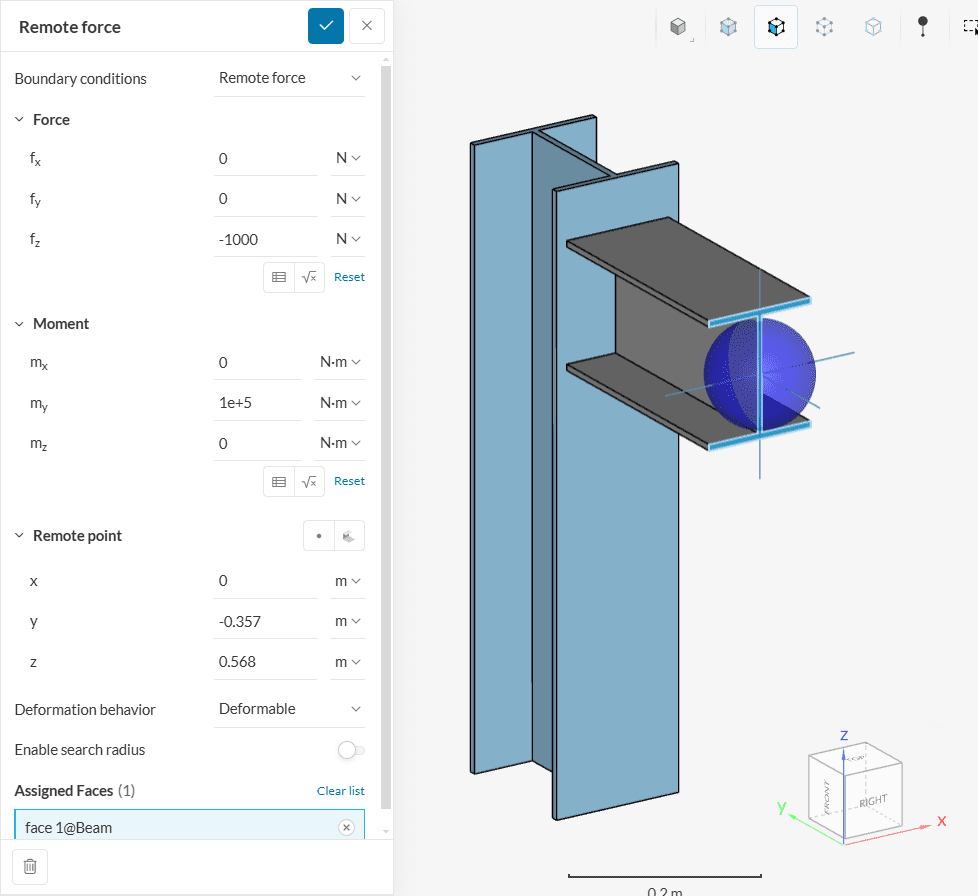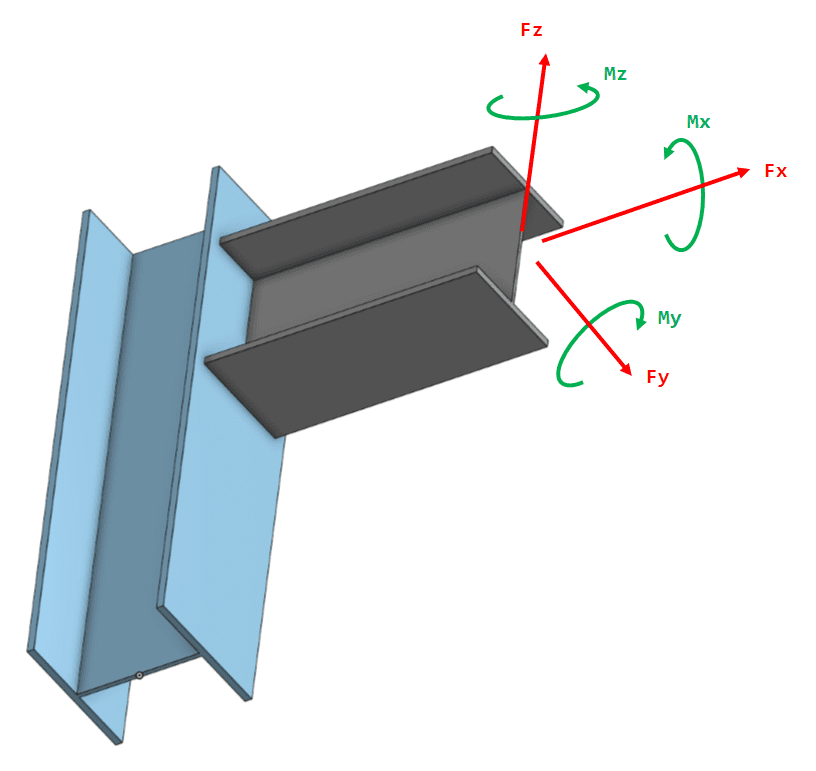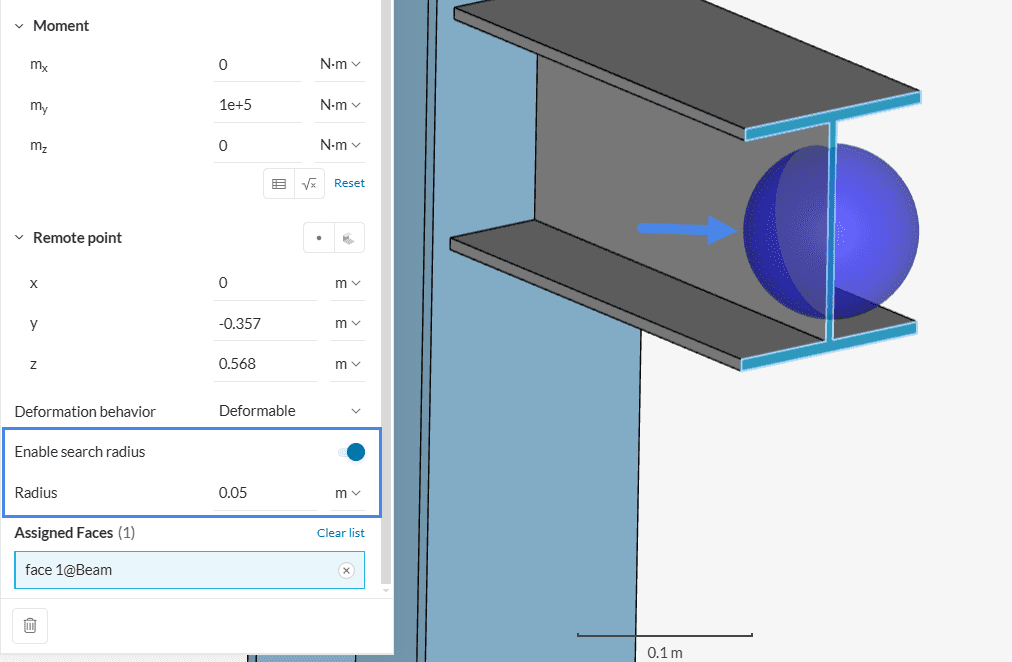Documentation
The Remote force boundary condition is used to apply a force to a face (or set of faces) of a structure from a remote point. This boundary condition is analogous to the Remote displacement boundary condition for forces.
In addition to what is possible with a standard force boundary condition, a remote force boundary condition has the following advantages:
There are also some limitations. The fact that this is a linear boundary condition, it is valid only if small displacements and rotations occur in the area of the applied entity and the remote point itself.
The settings for Remote force boundary condition, in the Workbench, are described below:

The user defines, for each global coordinate directions, the force that should be applied. Each value can either be defined by a scalar value, a function, or a table. For function or table data the value may depend on time (or frequency in case of a harmonic analysis) or the spatial coordinates.
For each rotational direction the user can define a moment (torque) that is applied to the assigned entities. The input methods and possible dependencies are the same as for the forces.

Here the user defines the coordinates of the external point on which the forces and moments are applied. The coordinates are given in the global coordinate system of the domain.
This property defines if the applied associated entities (edges or faces) may deform or if they are assumed to be rigid.
When set to Deformable, no additional stiffness is generated on the applied entities due to the displacement restrictions. The remote point is connected to the entities by an RBE3-constraint. This means that the forces of the remote point are distributed to the nodes inversely proportionally to the distance to the center of gravity of the assigned entities.
When set to Undeformable, the entity behaves like a rigid part. The connection of the point and the entities is a multi-point constraint which blocks all relative displacements between the affected nodes.
Force distribution and mesh density
The force distribution is also dependent on the mesh density. So regions with higher mesh density will have more forces assigned than regions with lower mesh density irrespective of the element size.
The enable search radius toggle allows the user to limit the number of nodes associated with the remote force boundary condition.
When enabled, the user defines a radius for a sphere that is placed on the Remote Point coordinates. Only the nodes on the assigned entities that are also within the sphere will be under the influence of the remote force boundary condition.

Following is the contour plot of von Mises stress on a structure subjected to Remote force boundary condition:
Hint
If the deformable option is used and the number of nodes of the assigned entities is large (>1000), it is advised to use either the MUMPS or PETSC solver instead of Multfront since the performance of Multfront is not optimal for this kind of equations.
Please refer to the following validation case for more information:
Last updated: March 12th, 2025
We appreciate and value your feedback.
Sign up for SimScale
and start simulating now